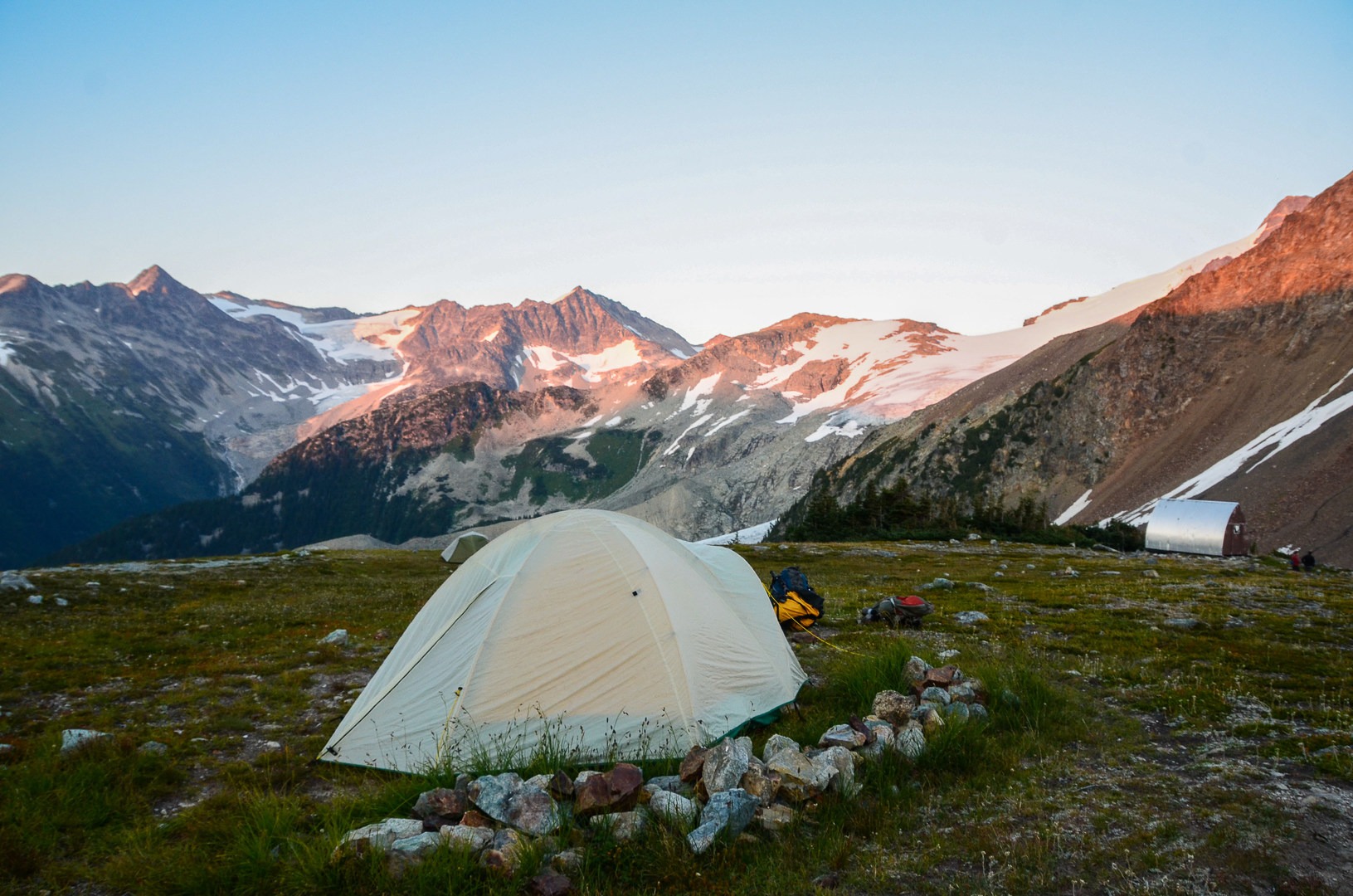You are here
People travel from around the world to enjoy the wilderness of Whistler. For those who want to get up close and personal and escape the bustling village, this route is a superb first backpacking adventure. The Singing Pass Trail to Russet Lake is a classic backpacking adventure guarded by a long sloggy approach up the valley. Those who can push past this first challenge will enjoy rolling alpine meadows, bountiful wildlife, and beautiful mountainscapes.
The trail starts at the Central Bus Loop above Whistler Village, and it has great transit access. From Vancouver, head for Highway 99 and follow signs to Whistler, turning off at the Whistler Village to get to the parking lot. You can also take a Greyhound to the Whistler Village if you don't have access to a car. There are paid and unpaid parking options in the village parking lot. Make sure you are allowed to park overnight before you set out. If you need supplies, the IGA is nearby along with a series of outdoor shops, Escape Route being the best of them.
The trail begins in rather boring fashion as a gravel road edging it's way up the bike park and ski hill. The trail proper begins to the left of a big water tower that is hidden in the woods, and it takes a gentle slope upward for 12 kilometers. The trail follows through the woods and offers occasional views of the surrounding peaks, a collapsed mine, and some views down into Fitzimmons Creek bellow. Multiple bird species live in the area in the summer, and alpine flowers bloom late into the fall. This section can be a bit tedious, but there are some lovely spots to stop for snacks, and the trail is a gentle ascent.
After 12 kilometers you'll arrive in the alpine. Graceful meadows filled with flowers and teeming with life surround you. It's a marvellous sight, and it may be worth continuing on to the campsite to ditch packs and explore more. Be careful, however; alpine wildernesses are very fragile environments. Only in the most extreme circumstances should you leave the trail. Leave No Trace is a critical code to follow so that we can enjoy these spaces for years to come.
Russet Lake Campground is maintained by BC Parks, and it is in the Garabaldi Park. You will need to purchase a reservation for a site and a backcountry pass from the website. There are limited facilites at the site, so make sure to bring all your own gear. You'll need a tent, pad, sleeping bag, stove, cookware, fuel, and water filter in order to spend a comfortable night. Try and use snowmelt and streams before taking water from the lake.
You can return down the way you came; however, you can vary the return by taking a left turn onto the trail to Whistler along the Musical Bumps. Flute, Oboe, Symphony and Harmony peaks are well worth walking along. It's a beautiful trundle through rolling alpine meadows before becoming a bit dustier and busy as you get closer to the gondola. From here you can take the gondola down to the village and back where you started. Prices may change, so check the download policy before you go.
Winter
This route can be done in winter on skis, and even snowshoes. The area around Cowboy Ridge has some avalanche risk, as does the approach up Fitzimmons Creek. Only parties with Avalanche Safety Training 1 should attempt this route. The trail is normally well packed out though, and it makes for excellent winter camping. A winter tent or snowcave is recommended because winter weather in that area can be very fierce and blustery. MEC Vancouver rents four-season tents and winter sleeping bags if needed.
Bears
Black Bears are a common sight in the Whistler Valley, and they are frequently seen on this trail. Generally black bears avoid noise and large groups, but being bear aware is still a good idea. Proper use of food lockers, keeping your campsite clean of food, and not keeping snacks in your tent is the best way to avoid bears. If you are very nervous, carrying bear spray can add a sense of comfort, but negative incidents are rare when hikers treat bears like the calm but wild animals they are. Give them space and they will treat you the same.
Lastly, remember the principles of Leave No Trace.
- Plan Ahead
- Travel and camp on durable surfaces
- Dispose of waste properly
- Leave what you find
- Minimize campfire impacts (respect firebans)
- Respect wildlife
- Be considerate to others (If you need music to enjoy the outdoors, respect the wildlife and other users who may have come a long way to hear birds singing, or silence. Use headphones).
- Be mindful of how posting on social media affects wild spaces.
For a more detailed look at this route, consult Backcountry Whistler by John Baldwin and 103 Hikes in Southwest BC by Jack Bryceland and Mary and David Macaree.
Logistics + Planning
Current Weather: Powered by Dark Sky
























Comments
Sign In and share them.